Updated Tuesday, Feb. 11, 2014, 8:20 p.m. ET

(AP Photo)
A storm bringing heavy ice and snow to the interior South will reach the Northeast Wednesday night and Thursday with heavy snow, gusty winds and disruptions to travel and daily activities.
The same storm set on disrupting flights at the major hubs of Atlanta, Dallas and Charlotte, N.C., in the South will take a tour of the Northeast before Valentine's Day. Airports from Washington, D.C., to Baltimore, Philadelphia, New York City and Boston will experience trouble with this storm.
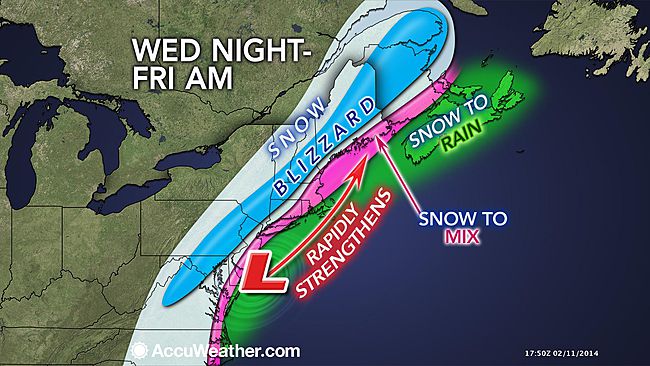
Flight delays and cancellations are possible throughout much of the nation well away from and ahead of the storm, due to aircraft and crews being displaced.
A swath of heavy snow is projected by AccuWeather.com to reach from portions of western and central Virginia, the West Virginia mountains and northern Maryland to southeastern and central Pennsylvania, northern New Jersey, southeastern New York and central New England.
This includes the I-81 corridor in Virginia, Maryland and part of Pennsylvania, as well as I-77 inNorth Carolina and Virginia and I-87 in New York.
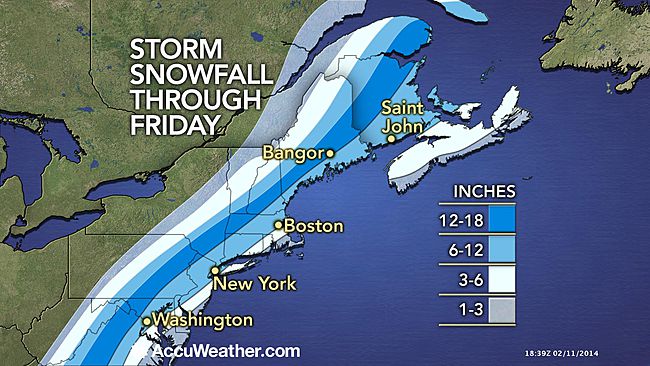
The storm will start as accumulating snow throughout the I-95 corridor and most coastal areas in the Northeast.
According to Chief Meteorologist Elliot Abrams, "While some rain can mix in along some of the I-95 cities, this will be a major storm throughout the corridor with enough snow to make for slippery roads and difficult travel."
RELATED:
AccuWeather.com Winter Weather Center
South Interactive Radar
Is the Northeast Running Out of Road Salt?
Even though the storm will move much faster through the Northeast, when compared to the South, it has the potential to bring a foot of snow in a swath north and west of the track of the center of the system. This is most likely in the northern and western suburbs of the I-95 cities in the mid-Atlantic and New England.
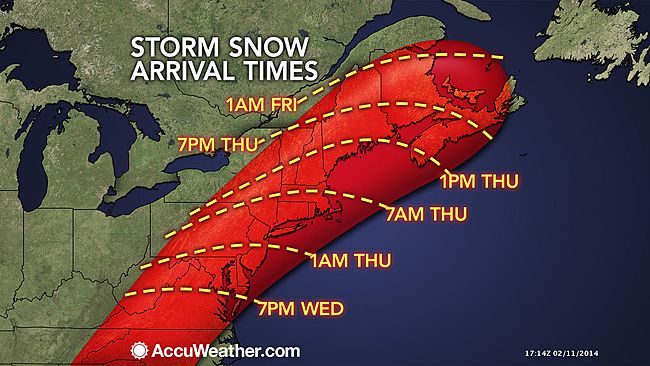
The system will track in such a way that part of the I-95 corridor will experience a change from snow to rain or to a mix of rain and snow. Such a scenario would result in added weight to the snow. The weight and increasing winds near the coast could bring down trees and power lines.
Inland from the coast, where the precipitation falls as all snow, the storm will garner enough wind to cause blowing and drifting snow at the height of and in the immediate wake of the storm.
According to Senior Meteorologist Henry Margusity, "In some areas from parts of Virginia, northeastward to New England, it may seem like a blizzard at times."
The storm is not likely to spare coastal areas, I-95 cities and their northern and western suburbs from heavy precipitation.
Folks from the Atlantic coast up to the Appalachians of the mid-Atlantic and New England should prepare for a classic nor'easter.
As the storm strengthens Thursday into Thursday night, enough onshore wind may be generated to cause minor flooding at times of high tide from New Jersey to Maine. The highest astronomical tides typically occur a day or so before the full moon, which happens to be on Friday, Valentine's Day. Water levels are likely to run 1 to 2 feet above published levels.
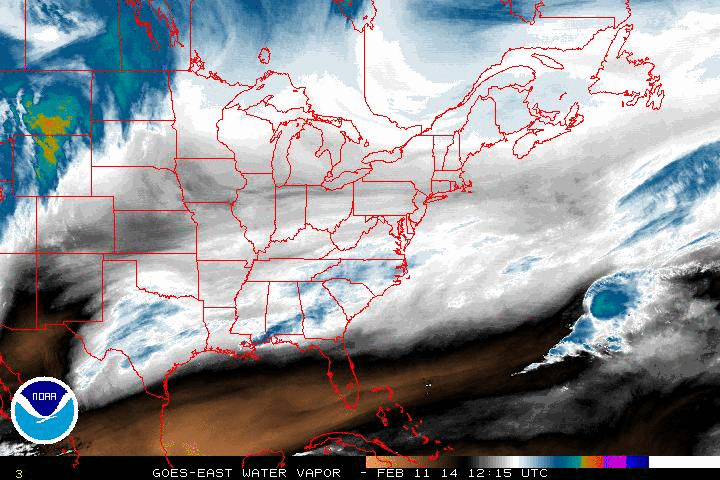
Prior to the arrival of the southern storm, most of the Northeast will be free of accumulating snow and will remain quite cold through the day Wednesday.
As of Tuesday midday, PECO was reporting that approximately 2,100 utility customers were still without power in the wake of the ice storm that hit southeastern Pennsylvania on Feb. 5, 2013.
There is the possibility of the power being knocked out in some of the same communities that were hit a week earlier.
For folks looking for a break in the cold, wintry pattern, a change to milder, less stormy weather is possible beginning around Feb. 17 or 18.
However, cold weather and storms may once again fight back toward the end of the month.

Read | Permalink | Email this | Linking Blogs | Comments

























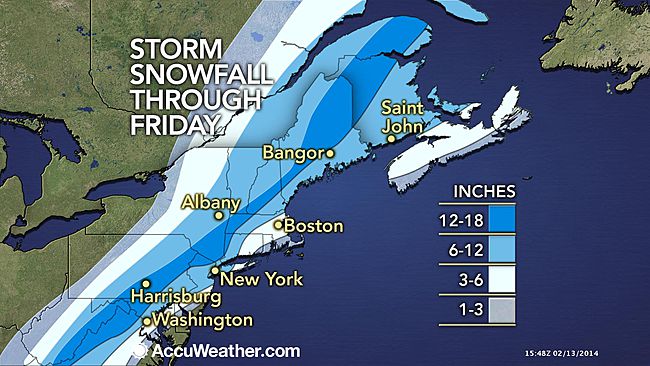




.jpg)








